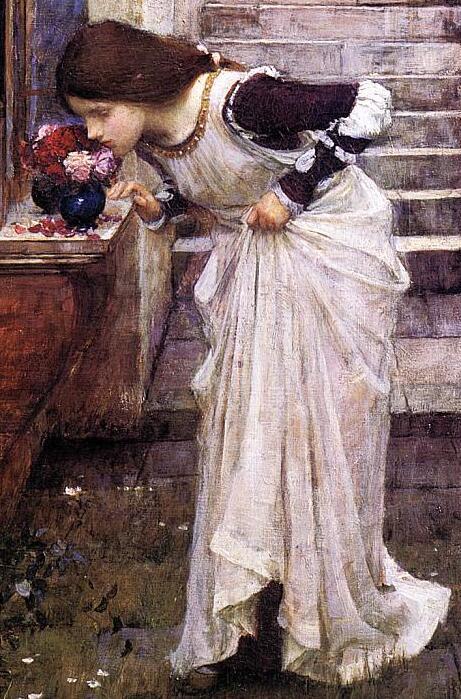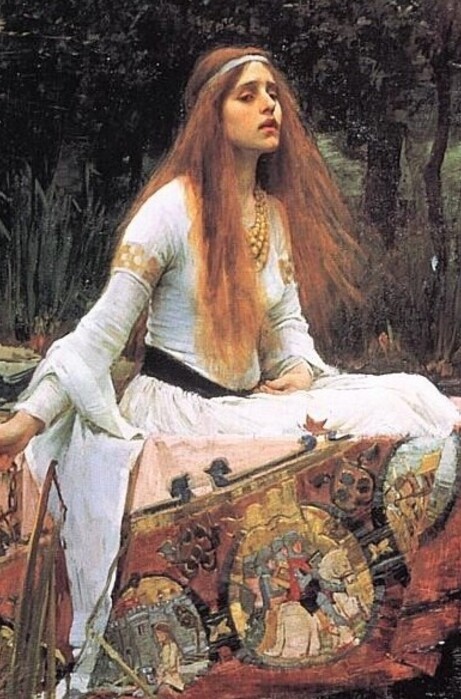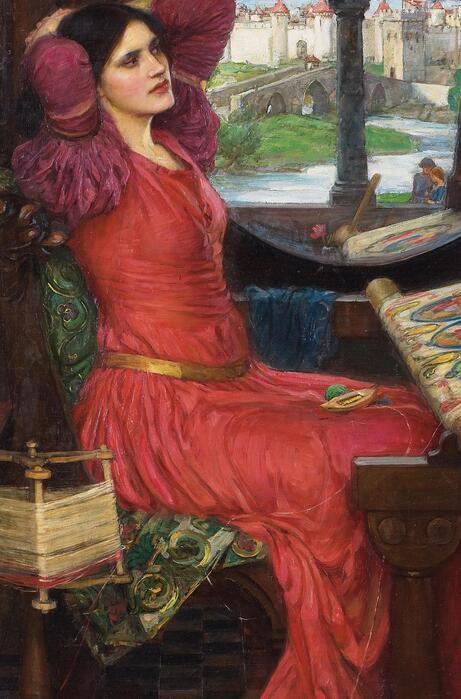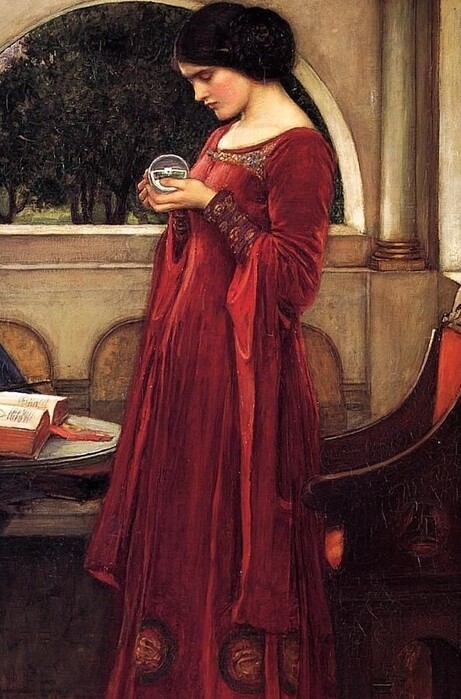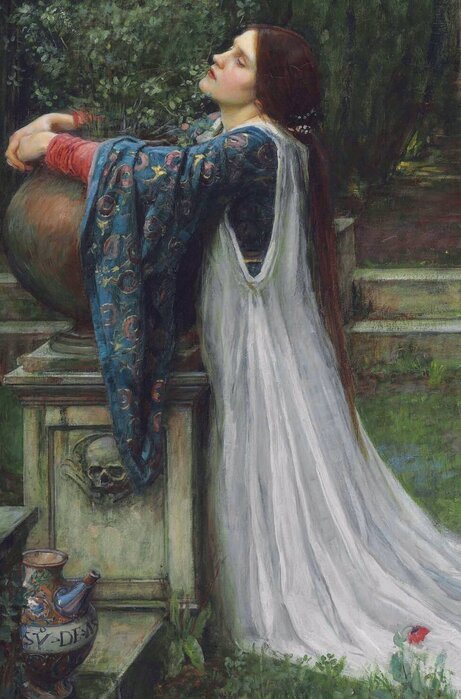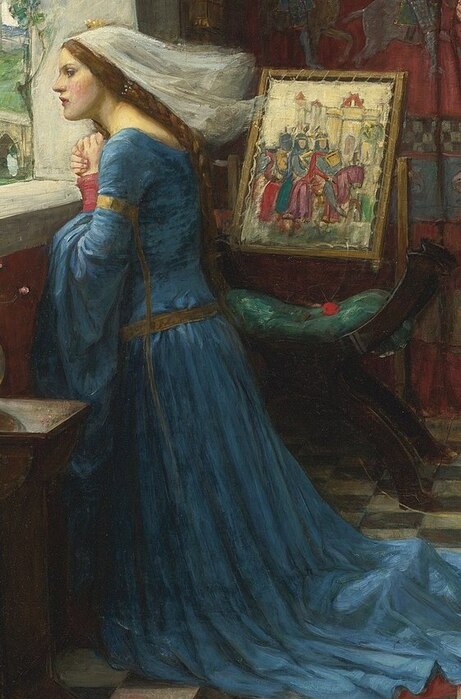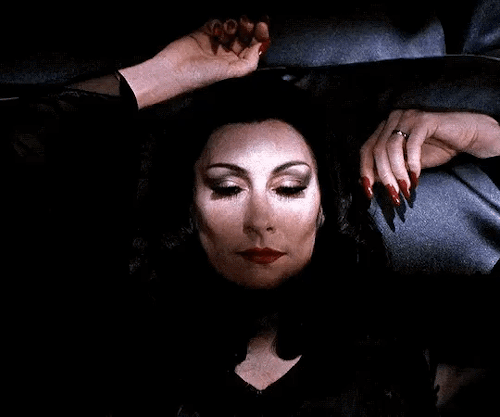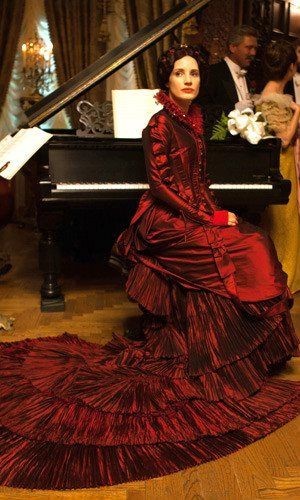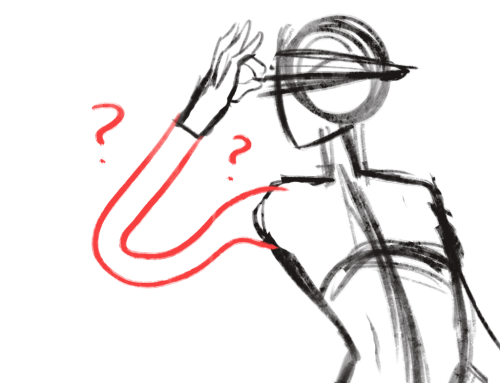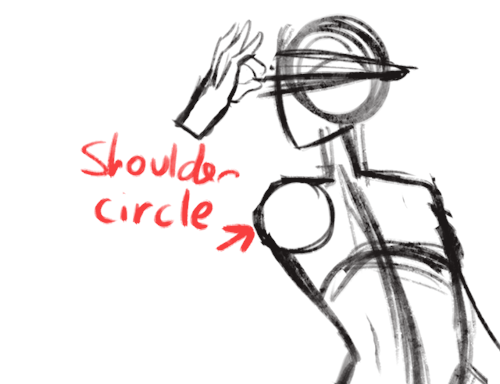A Lit Of People Think That Worldbuilding Exists Solely To Make Epic, Sweeping Fantasy Worlds To Quest
A lit of people think that worldbuilding exists solely to make epic, sweeping fantasy worlds to quest across, but it can create smaller, softer, mundane worlds to inhabit too.
You can worldbuild a small village. You can worldbuild a bookshop. You can worldbuild a jail cell, or a wishing well, or a single-parent household.
Not every story wants a grand scope.
More Posts from Ladyforger and Others
Naughty words in a godless world
Imagine you're writing a story that takes place in a world that has no God, or gods, or saints. What do you do with exclamations like "Oh gosh!" (derived from "Oh God") or "Jeez!" (derived from "Jesus!")? And - oh god - what do you do with curses and swear words? If your characters can't say "Oh my god", "hell no", or "damn" because there are no gods to damn anyone to hell... what are your options?
Here is a list for inspiration
In general, non-religious curse and swear words refer to local cultural taboos.
Many languages swear by referring to cleanliness: dirty, sweaty, sticky, smelly etc. This includes things you do on the toilet.
Some languages, like Dutch, use diseases as curses and insults. For example, someone nasty/bothersome might be called a "cancer sufferer" in Dutch. These swear words are combinations of (derivates of) typhus, cholera, and cancer.
Societal hierarchy and family trees, mainly the inferior positions like a bastard (seen as inferior in the family tree) or a derogatory word that refers to lower class people (seen as inferior in that society).
On the other hand, you could insult a highly valued member of the other person's family, like their mother, or of their society, like their Queen/Emperor.
Sexual taboos, often implying someone (or their mother) is more sexually active than society accepts of them.
Calling someone the word for someone's genitalia refers to the same taboo.
How do you apply this to your language?
You could use explicit/taboo words as ... :
... an intensifier: "It was a shit-hot day."
... a negative adjective: "This is a shitty job."
... an insulting noun: "This journey is shit."
Or try to be creative and combine different taboos for a multi-hit offense. My favorite one is the Spanish "I shit in your mother's milk", which combines insulting the other person's mother, the taboo of bodily functions, and the taboo of cleanliness.
During my research I came across this article, which contains a number of concrete examples from all over the world you can draw inspiration from.
And on a less offensive note, you could always make up your own equivalent of "Merlin's beard!", "Great Scott!", or "For Pete's sake!" (Pete, by the way, is a catholic reference: Pete is Saint Peter.)
I hope this was helpful. Don’t hesitate to ask me any questions, and happy writing!
Follow me for more writing advice, or check out my other writing tips here. New topics to write advice about are also always appreciated.
Tag list below the cut. If you like to be added to or removed from the list, let me know.
And if you come up with creative curses, feel free to add them in the comments :)
@therska @writingwordsaddrawingpictures @the-words-we-never-said @writingwhithotchocolate @i-rove-rock-n-roll @maskedlady @no-time-like-write-now @timefire25 @black-lakritz-dragon @nzmayart @fandomrandomness-stuff @dangertoozmanykids101 @anaestheticdisaster @storytellingofravens @purpleshadows1989 @mathematicpony @i-don-t-know-words @notquitenovelist @coffeescribles @reffaces @livingthelovelylife @katsglabella @lokitty-is-my-spirit-animal @thefallenbibliophilequote @watchmewritedumb @sting-the-scribe @kais-writing-shit @dameschnee123 @curiosityonmars @oodlittlething @nonbinarychaoticstupid



Lucerys Velaryon & Aemond Targaryen in 1.10 “The Black Queen”
a quick grass tutorial
I’ve never really wrote a tutorial before so apologies if this is bad
1. okay first thing I do is pick three colors, a mid, dark, and light. I like to check the colors in greyscale to make sure there’s enough contrast between each one.
I then plop down a blob of whatever my middle tone color is.

2. next, I take my dark color and just sort of randomly place it around. I try to make sure there’s a good amount of both the mid and dark tones spread throughout. I personally like to keep it kinda messy. I also have pen pressure on for both brush size and opacity, so I can have some blending action going on.

3. for the next step I do the exact same thing as before, except with the light color.

4. aight this is where we start adding details. see how you just have a bunch of colors and edges where two colors meet? use the eyedropper and go to an area where two colors meet, eyedrop a color, and then use that color to draw in your grass blades. I do this at every point where colors meet. should note I personally like to use a square brush, but you can really just use anything.

5. you can technically stop at the last step if you’re going for a more simple look, but to add more details I go to the “empty” areas of solid color and just draw in random strokes using a color nearby. it’s just a way to fill up the empty space.

6. basically more of the same idea of eyedropping and drawing. for more variety so things look interesting, I like to add random plant shapes.

7. and so the grass doesn’t look too plain, I add random dots of color and pretend it’s flowers and stuff.

and there you have it, this is how I approach drawing grass.
Avoiding ambiguous brown without cultural coding
@ahivemindoftwelvecati asked:
How should I, a white person, avoid making characters fall into the vaguely brown stereotype in my fantasy books? I’m against coding cultures into this book, as I’m really trying to create a unique world (ironically by studying a lot of different cultures). By doing this though, am I doomed to remove characters from cultural context, or leave people wandering in vague color shades? Especially since some of my characters would fall into various indigenous ethnicities, but share nothing cultural
In an interesting way, I think the Star Wars novels kind of do an okay job about it (of course, others might differ, in which case I defer to them, but in my opinion they pull off something similar). For context, it all takes place in a galaxy where absolutely none of Earth’s cultures are present, but there are still human beings that are Latine-coded, Black-coded, etc, and they accomplish this through very simple descriptions of character appearances. For example, there was a Black-coded woman and her description ran something along the lines of “She had dark, rich brown skin and her hair was curled tightly, pulled back into a bun. She hated the moist heat of the swamp planet, but she had to admit her hair never looked better.” Through that, the audience understands that she’s most likely Black-coded (dark skin+tight curls), but they avoid cultural points (also the little detail of humid heat being great for curls is just a cute lil extra IMO, that’s something I hear people with 3- or 4-type hair saying a lot).
The pitfall here is that, since there’s no cultures analogous to what we have here in our world, each reader will have different interpretations of what each character might identify as ethnically. Who someone might headcanon as Korean, another might headcanon as Chinese, etc. That’s something you have to figure out for yourself if you’re okay with having–just that vague sense of ‘ah, this person must be from this vague region of the world’–or if you want to be more explicit.
–Sophia
So… to expand on the point Sophia put out that it’s up to the reader to determine what race somebody “really” is and how that’s a problem.
One of my best friends is mixed Japanese/white. Thanks to genetic roulette, they get approached by various Indigenous peoples asking what nation they’re from, because they look really Indigenous.
I’m mixed Mohawk/Mi’kmaq/white. Thanks to genetic roulette, nobody can tell where I’m from and I’ve gotten everything from West Asian, North Indian, and Great Lakes Native (basically, anywhere that golden-tanned skin + dark hair + no monolid is considered normative, I could pass for there)
My mom, meanwhile, looks very, very Mexican, despite being the same mixes as me at a higher percentage Native; she tans more pink/red and tans darker than I do. She also has a totally different face shape than I do.
Aka, there are dozens upon dozens of groups that look interchangeable, and the only thing that separates us is our culture.
When you’re dealing with more “obvious” features like type 4 hair, monolids, very dark skin, very pale skin, and those stereotypical things, yeah, you can usually peg down a general region. You’re basically only going to have Black people with kinky, delicate hair (but, are they African, Australian Indigenous, or Black Native? Because Australian Aboriginals are also very dark skinned and have a similar hair texture; Black Natives sometimes inherit the level 4 hair texture). You’re basically only going to have Northern settled peoples with white skin (barring albinism/vitiligo) but are they Norwegian or Sami?
What happens to all the people who are ambiguous in real life?
The trope has a basis in reality. Humans would like to think that a certain set of features = obviously from this place, but as soon as you expand your sample size beyond models, movie stars, and idealized art, you find that people look really different and you absolutely cannot rely on this logic.
It’s even a known fact among the modelling industry that anyone vaguely not-white who looks like they could maybe belong to any other group of brown people is put in for casting calls for that group, even if they’re not part of that group. It’s messed up, but it happens all the time. A Latine person could be put in as Arab, and an Ojibwe person can be put in as Filipino.
Culture is the thing that separates these people in real life. So as soon as you take that culture away, you’ve essentially lost any representation you could get. You’ll get diversity, yes, but it will not be representation.
Sure, you perhaps gain some representation as people look at parts of their culture that might be incorporated (maybe by accident, maybe on purpose) and say “hey, that’s us!”
But you’ve also strewn infighting by having perhaps multiple groups be able to say the same thing, and these multiple groups could very well share a lot of phenotypic traits, so suddenly you’ve represented nobody because you haven’t put anything solid that would sway the needle one way or the other.
If you start to assume too much that features = obviously this person is from x part of the world, then you really ignore a whole lot of human migration, diffusion, and people who just lived in really similar biomes so their physical features, skin tone, and hair type ended up being the same just purely because that had the best chance of surviving the region, or had no reason to change.
Diversity exists because of the environment. Skin tone, hair type, jaw shape, etc exist because of the food available, how it was grown/gathered (horticulture and “hunter-gathering” vs agriculture), the way food was eaten, the amount of sunlight, and the vitamins available in diet. This happened over tens of thousands of years.
But also, certain environments produced very similar coping strategies. There are only so many ways to survive a very hot desert, so unless you’ve really messed with the natural world in fantasy, you’re going to end up pulling from earth’s coping strategies for the very hot desert. Which means you could end up being kinda hurtful towards desert peoples who see their clothing and food growing ways used, with people who look like them because skin tone is environmental, but hardly anything else about their culture was taken.
Especially for Indigenous peoples, culture and land protection is what makes us Indigenous. How are you going to show us in your work unless you dig into our cultural principles (land protection) at the very least? Nothing about our facial features or skin tone are particularly unique to us, and assuming they are is how you get caricatures. There are Black Natives* to white Natives to mixed cultures with European and Indigenous practices (Metis) and everything in between. And that’s just North America’s range.
This isn’t even counting how there are Indigenous people everywhere, so when you say “Indigenous” do you mean the Mohawk? The San? Mbororo? Ainu? Sami? Samoan? There are literally thousands of groups that are primarily separated from the dominant group because of their way of life and maybe some subtle phenotyping. But primarily, they are separated by their culture.
I would suggest, at the very least, to have some degree of basic cultural beliefs to help differentiate groups of brown people who would otherwise be interchangeable. Land stewardship and using every part of the natural world for Indigenous groups, for example. You can’t really find Indigenous groups without that, so if it was missing I would raise an eyebrow.
Distinct foodstuffs and diets are another way to differentiate and code; you know that this group that uses chickpeas, sorghum, barley, and wheat is probably from West Asia, and that group that eats rice at every meal is probably somewhere from East Asia. Food is a very fast way to differentiate between groups, because even far-reaching staples are fairly different across cultures.
You don’t have to 1 to 1 code a culture. But for actually differentiating between people, you’re going to need more than one point of reference beyond looks. Food, nomad status (as in, settled vs nomadic vs hybrid), basic religious practices (monotheist vs pantheist), and broad-reaching cultural attitudes (collectivism vs individualism, who you’re expected to be collectivist with) are all points that help break apart these groups and let them know you see them.
It’s important to note that even if you do fantasy, it’s read in the real world. It’s read by humans, who are pattern recognizing machines. We will see patterns. Niki points out ways to try and avoid this patterning below, but it’s going to happen regardless.
It’s up to you what you actually want, out of not overtly coding anyone.
~ Mod Lesya
*Black Natives and cultural practice is a fraught topic (mostly because of slave-owning tribes) that is mostly summed up as: Black Natives are often barred from tribal participation because anti-Blackness is rife within North American Indigenous communities, but they have been tending the land just as much as if not more than their former enslavers; as such, they are members of the cultures/nations and should be recognized. They have been part of the land as North American Indigenous peoples for centuries, at this point, and the fact there is still enough anti-Blackness in Native communities that Reservation Dogs used nothing but Black caricature is… a problem to say the least.
This isn’t counting mixed Black/Natives who had their Native parent/grandparent cast out for marrying someone Black, who were raised in cultural practices without community ties because of anti-Blackness, who should also be recognized. If it’s valid to mix white culture with North American practices, it’s valid to mix Black culture (Black American and/or African Indigenous) with North American practices.
Do you want diversity or do you want representation?
Lesya raises a very important point that I encourage you to really think about. Why do you want to have diversity in your fantasy worldbuilding? Is it because you want your readers to feel seen and represented? Or is it because you want your fantasy world to feel well-rounded and realistic? These are two different motivations, which will require different approaches.
If you want representation, then go back and reread Lesya’s answer. Representation that’s only skin-deep isn’t really representation, and won’t help your readers feel seen. If, however, you want diversity for diversity’s sake–because diversity is realistic, and because it’s simply good writing to include it–then I have some more thoughts to offer.
In my opinion, there’s nothing wrong with creating a fantasy world that has fictional diversity that doesn’t directly parallel real-life groups and cultures, as long as you’re aware that that’s what you’re doing. This is arguably very common in high fantasy, though the effectiveness with which it’s executed varies wildly from author to author. N. K. Jemisin describes what she did for the Broken Earth trilogy in this blog post.
Unless you’re working with a very small subsection of the world (and even then–everything’s connected), diversity is natural, because people will be living in different geographical areas that each have their own climate, fauna and flora, which will shape both their physical appearance and their way of life. Thinking about the physical environment is a good starting point for figuring out what your population groups will look like and how they’ll behave.
But as Lesya pointed out, it’s very easy, when doing this, to inadvertently re-create elements of coding that will remind your readers of real-world groups, even if that wasn’t your intent. If that happens, you’ll have two options:
1) Very deliberately alter the coding to make it clear that you’re not trying to represent a certain real-world group (in the post I linked above, Jemisin talks about what she did to avoid appropriating Maori culture), or
2) Embrace it and go the representation route after all, which will entail a lot of research and care to make sure your coding makes sense, is respectful, and doesn’t reinforce harmful stereotypes.
Assuming you’re going with option 1, there are still more issues to be mindful of. We said before that representation that doesn’t include culture isn’t really representation. Here’s the thing: This is also true of fictional diversity. Even if your fantasy cultures are entirely created from scratch, they still need to exist, and be distinct and thoughtfully portrayed, in order for your world to feel well-rounded and realistic.
Diversity is more than physical appearance
As Lesya demonstrated, physical appearance alone isn’t enough to make groups of people distinct from another. In order to avoid the “ambiguous brown” trope you’re worried about, you will need to give your different groups of people distinct cultures.
There might be some cases where it would make sense for an entire fantasy world to have a single, homogenous culture, within which people of various ethnic backgrounds exist, resulting in a variety of physical appearances but everyone sharing the same culture. But if you’re planning to do this, you need to give a lot of thought to why things came to be this way. If an entire world is made up of a single culture, that usually indicates something very traumatic happened on a large scale. Maybe an apocalypse, or massive amounts of forced assimiliation or genocide. I don’t recommend going that route unless you’re willing to grapple with all the trauma that entails, and all the potentially problematic implications. You’re much better off populating your world with a diversity of cultures. They don’t need to be coded based on real-world cultures, but they need to exist.
In my opinion, the main issue with “ambiguous brown” characters is that it makes it seem we’re all interchangeable. In real life, we’re not. Make sure that’s the case in your fantasy world, too. Craft your population groups so they’re distinct, each with their own history, culture, language, and traditions. Your worldbuilding needs to be deep enough to counteract the absence of parallels to real-life cultures. We need to be able to look at it and say, “okay, this is not representing me specifically, but it’s also not lumping me in with everyone else that vaguely looks like me.”
And don’t make the mistake of thinking one skin tone = one group. That’s not true in real life, and it shouldn’t be in fantasy either. Using skin color and a handful of stereotypical features as shorthand for ethnicity or culture is not only shallow worldbuilding, it also feeds into the racist pseudoscience that sorts people into four or five neat color-coded boxes and collapses the world’s diversity into a handful of supposedly biologically determined races. If you’re creating cultures from scratch, this is your chance to challenge those ideas and populate your cultures with people who don’t all look the same. Within a single group, you can have characters with a variety of skin tones, hair texture, eye color, height and build, etc. Because this is what happens in the real world. Some groups include a lot more diversity than others, but variation exists everywhere.
This will partly depend on how interconnected your world is, and how much interaction exists between your various groups. More interaction and exchange tends to lead to a wider range of physical characteristics within each group, and it also results in similar features being found in multiple groups. Think about how that might play out in your fantasy world, and make sure you’re being as specific as possible with your fictional cultures so that you don’t have to rely on physical appearance alone to distinguish your population groups from one another.
- Mod Niki


from baby lucerys and aemond messing around behind the scenes to older lucerys and aemond messing around behind the scenes 🖤
Extremely Comprehensive World-building Checklist
Inspiration for every country
Map, or basic understanding of the layout. I recommend Inkarnate for making maps!
Major historical events, think about how wars have sparked new political philosophies and how they’ve shaped cultures today (think about how Liberalism stems from a response to oppressive monarchies)
What’s the culture of the different countries in your world? What kind of arts do they practice, if the arts are widespread? What’s available for entertainment, does the average person have enough downtime to participate in leisure? What’s the architecture like? What are the major exports of each country?
Are there any major historical figures in your countries? Any influential works of literature that have been studied?
What does daily life look like for people in different socioeconomic classes?
Is the culture of country side villages and towns similar to urban areas? How does it differ?
What is the religion? Does each country follow something different, or is everyone the same? Is it mono or polytheistic? Who are the religious leaders? Do people attend church, or is worship practiced in private? Are there any rituals?
Building off of religion, is there any religious conflict?
What does the government look like? Is it an absolute monarchy? Constitutional monarchy? Or some form of democracy or republic? Who’s the leader and what other positions hold power?
Does each country have a government, or is your world ruled under one government?
What do the different classes look like in your country? Do the higher social classes look down on those beneath them? Is there a general sense of class consciousness, and class conflicts?
Climate of each country, territory, or state
Typical jobs of every country, territory, or state
What kind of transportation is available?
What does the military look like? Is there one? Do any militias operate in the rural areas?
Does your world have any myths or legends? What were they influenced by, and how do they influence the culture? Are there any superstitions around these myths?
Typical foods, what do most people eat? Is the food bland, or flavorful? How does access to food differ for different people, and does the type of food eaten change with social status?
Type of laws, do the people have any protected rights? What might get someone thrown in a cell for a night? Do your countries have an organized prison system, or do they operate by throwing everyone in the castle’s dungeons?
What kind of economy do the different countries have? Is it regulated by the government? What’s the major currency?
What’s the social life like? Are there certain customs to follow? What’s considered polite or impolite?
How are foreigners seen? Is there any hostility towards them, or are the citizens of your countries more accepting of other cultures?
What are the relationships like between countries?
What weapons are used in war?
What’s the general attitude towards war and other conflicts? Do any of your countries use a pacifist approach? Do any countries protect their neighbors from a common enemy?
Sanitary system, do they have sewage? Think about how disease was common in cities before proper sewage was invented.
Educational System for the poor, is there any sort of public education? Is there any sort of access to higher education, if it exists in your countries?
Educational system for the rich, do nobles typically hire tutors or is there a system of private schooling?
How is education viewed? Is it valued?
How do the people communicate, between cities or even countries? Is there any form of published communication, or is everything passed through spoken word?
Morality, what is considered moral or immoral?
What are the beauty standards of your country? How are different physical appearances viewed?
What’s the clothing like? What does the average peasant wear, what does the average noble wear?
What language is spoken? Do different countries speak different languages? Is there a common tongue?
Are good hygiene practices common? How often does the average person bathe?
Is marriage viewed as a religious or legal institution? What’s the general attitude towards marriage? Is it common? What does the courting process look like?
Are water and other resources readily available? Do they have to be outsourced to other countries?
Science, is it accepted? Do people actively research new things in your countries?
Going back to the prison question, what is the legal system like? Do people get trials? What sort of crimes result in different penalties? Who makes the final decision of punishment, a judge? The lord ruling over the territory the crime took place?
How is death treated? Are funerals held? Do they bury their dead, or use funeral pyres? Are funerals viewed as a celebration of the person’s life, or a time to mourn?
What kind of diseases are common? What do the symptoms look like?
What are your countries’ attitudes towards alcohol and other substances? Is drinking a common practice, or widely frowned upon?
When looking at these different aspects of your world, it’s also important to remember that the histories of our world don’t have to dictate what happens in yours. For example, public education wasn’t really common in the United States until the 1800s. On the other end of that, one of the earliest formal schools was founded in Egypt in 2061-2010 BC and many Middle Eastern cultures have pushed for education since then as the ability to read religious scripture was important.
That said, using the characteristics of different countries can be useful in guiding your own and the histories of said countries can guide you even further. Your world can resemble ours, or be totally different and backwards. At the end of the day, have fun!
-
 newdawnhorizon reblogged this · 4 months ago
newdawnhorizon reblogged this · 4 months ago -
 potatolordofficial reblogged this · 6 months ago
potatolordofficial reblogged this · 6 months ago -
 raspberrysweettea13 reblogged this · 6 months ago
raspberrysweettea13 reblogged this · 6 months ago -
 breathe-in-starlight liked this · 6 months ago
breathe-in-starlight liked this · 6 months ago -
 sir-kronos liked this · 6 months ago
sir-kronos liked this · 6 months ago -
 sir-kronos reblogged this · 6 months ago
sir-kronos reblogged this · 6 months ago -
 gailynovelry reblogged this · 6 months ago
gailynovelry reblogged this · 6 months ago -
 inkysqueed liked this · 9 months ago
inkysqueed liked this · 9 months ago -
 beloveddawn-blog reblogged this · 9 months ago
beloveddawn-blog reblogged this · 9 months ago -
 suninmypocketmooninmyhand reblogged this · 9 months ago
suninmypocketmooninmyhand reblogged this · 9 months ago -
 squarebracket-trickster reblogged this · 9 months ago
squarebracket-trickster reblogged this · 9 months ago -
 amostdelectablescribbler liked this · 9 months ago
amostdelectablescribbler liked this · 9 months ago -
 amostdelectablescribbler reblogged this · 9 months ago
amostdelectablescribbler reblogged this · 9 months ago -
 snakesong reblogged this · 9 months ago
snakesong reblogged this · 9 months ago -
 amostdelectablescribbler reblogged this · 9 months ago
amostdelectablescribbler reblogged this · 9 months ago -
 illarian-rambling liked this · 9 months ago
illarian-rambling liked this · 9 months ago -
 itzsochaer liked this · 9 months ago
itzsochaer liked this · 9 months ago -
 kopivie liked this · 9 months ago
kopivie liked this · 9 months ago -
 musingsofagloomywitch reblogged this · 9 months ago
musingsofagloomywitch reblogged this · 9 months ago -
 mundanemoongirl reblogged this · 9 months ago
mundanemoongirl reblogged this · 9 months ago -
 mundanemoongirl liked this · 9 months ago
mundanemoongirl liked this · 9 months ago -
 doggo-v10 liked this · 9 months ago
doggo-v10 liked this · 9 months ago -
 ditzybitzyspider reblogged this · 9 months ago
ditzybitzyspider reblogged this · 9 months ago -
 ditzybitzyspider liked this · 9 months ago
ditzybitzyspider liked this · 9 months ago -
 dandelion-jester liked this · 9 months ago
dandelion-jester liked this · 9 months ago -
 rbbess110 reblogged this · 9 months ago
rbbess110 reblogged this · 9 months ago -
 rbbess110 liked this · 9 months ago
rbbess110 liked this · 9 months ago -
 jelli-j reblogged this · 9 months ago
jelli-j reblogged this · 9 months ago -
 jelli-j liked this · 9 months ago
jelli-j liked this · 9 months ago -
 zyrafowe-sny liked this · 9 months ago
zyrafowe-sny liked this · 9 months ago -
 squarebracket-trickster reblogged this · 9 months ago
squarebracket-trickster reblogged this · 9 months ago -
 squarebracket-trickster liked this · 9 months ago
squarebracket-trickster liked this · 9 months ago -
 feral-bookwoom liked this · 9 months ago
feral-bookwoom liked this · 9 months ago -
 blue-kyber reblogged this · 9 months ago
blue-kyber reblogged this · 9 months ago -
 aalinaaaaaa liked this · 9 months ago
aalinaaaaaa liked this · 9 months ago -
 forthesanityofstorytellers reblogged this · 9 months ago
forthesanityofstorytellers reblogged this · 9 months ago -
 forthesanityofsome liked this · 9 months ago
forthesanityofsome liked this · 9 months ago -
 gailynovelry reblogged this · 9 months ago
gailynovelry reblogged this · 9 months ago -
 feather-flavored-melancholy liked this · 10 months ago
feather-flavored-melancholy liked this · 10 months ago -
 darkwizardjamesmason reblogged this · 10 months ago
darkwizardjamesmason reblogged this · 10 months ago -
 darkwizardjamesmason liked this · 10 months ago
darkwizardjamesmason liked this · 10 months ago -
 xrinsu liked this · 10 months ago
xrinsu liked this · 10 months ago -
 vulkinposts reblogged this · 10 months ago
vulkinposts reblogged this · 10 months ago -
 jennytwosheds reblogged this · 10 months ago
jennytwosheds reblogged this · 10 months ago -
 jennytwosheds liked this · 10 months ago
jennytwosheds liked this · 10 months ago -
 thethirdbird liked this · 10 months ago
thethirdbird liked this · 10 months ago -
 whatevenisthisbloganymore reblogged this · 10 months ago
whatevenisthisbloganymore reblogged this · 10 months ago -
 merryanthus reblogged this · 10 months ago
merryanthus reblogged this · 10 months ago

Loid/Yor (SxF) fic writer. +20. Twitter: @forgersarchive. Ao3: LadyForger.
34 posts
